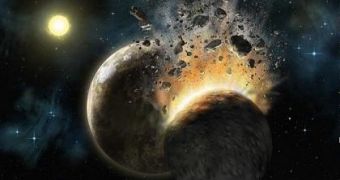There seems to be a constant rush as of late to demonstrate that what we used to know and treat as a given is wrong. Evolving technology and the increased amount of accurate scientific data provide more insight on many of these aspects that were not thoroughly investigated so far. As such, it appears that the prevalent theory on the planets' formation, lasting from the '70s, has come to an end as well, in the light of a recent study.
Up to now, it was presumed that the planets were the result of the clumping process of a protoplanetary accretion disk. The early stages would see the layers of dust and gas orbiting a star getting thinner and more dense, then steadily accumulating into larger blocks, growing from particle size to kilometer-wide boulders and, eventually, to planet-large structures. This phenomenon would be triggered by the gravitational instability and would occur in the middle of the disk, stated the old theory.
But the new study, led by Joseph Barranco, a professor at San Francisco State University, slams the door in its face, claiming that the host star features turbulent forces that would keep the gravitational instability process from occurring by constantly stirring the dust and gas disk and preventing it from becoming thinner and denser. Barranco's 3D research (as opposed to the old 2D ones) takes into account the impact of the Coriolis Effect, which is also responsible for the most powerful terrestrial storms.
"These results defy the proposed solution of how planets are formed," explained Barranco, cited by PhysOrg. "Scientists have long been using gravitational instability theory to explain how millimeter-size particles grow to kilometer-size, but these new simulations open new avenues of investigation. Perhaps massive storms, similar to hurricanes found on the Earth or Jupiter, provide clues about how tiny dust grains clump together to become kilometer-size boulders."
"What happens to the dust and gas after a period of turbulence is still an open question," adds the professor. "But it could be that in the quiet center of a hurricane-like storm, dust can collect and get trapped, seeding the beginnings of planet formation."

 14 DAY TRIAL //
14 DAY TRIAL //